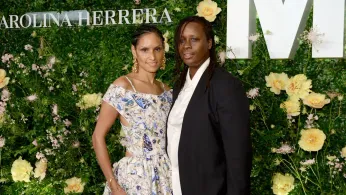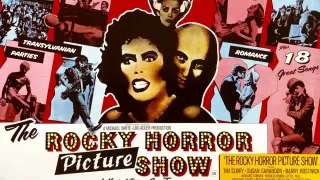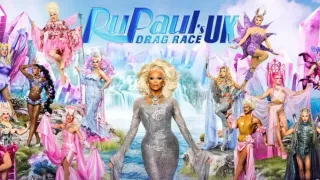
3 hours ago
“RHONY” Star Racquel Chevremont Files $10 Million Lawsuit Against Artist Mickalene Thomas
READ TIME: 3 MIN.
Racquel Chevremont, widely known for her pioneering work as an art curator and for her appearance on the latest season of Real Housewives of New York, has initiated a $10 million lawsuit against her ex-fiancée, internationally renowned artist Mickalene Thomas. According to public filings and recent media reports, Chevremont’s lawsuit centers on claims of exploitation, nonpayment, and harassment during and after their personal and professional relationship.
The legal action was filed in New York, where both women are prominent figures not only in the art community but also within broader LGBTQ+ representation on television and in the city’s cultural scene. Chevremont’s decision to take legal steps followed what she has described as ongoing issues related to professional collaboration and personal dynamics with Thomas.
Court documents reviewed by several art and entertainment news outlets detail Chevremont’s allegations that Thomas exploited her expertise and labor without adequate compensation or acknowledgment, particularly in joint professional ventures and projects. She also claims to have experienced harassment, which allegedly continued after the dissolution of their engagement. The lawsuit seeks both financial damages and public accountability from Thomas.
Neither Thomas nor her legal representation has issued a public statement as of the time of publication. Chevremont’s legal team has emphasized the importance of setting a precedent for equitable treatment and recognition of labor, especially within high-profile partnerships in creative industries.
Both Chevremont and Thomas are respected members of the LGBTQ+ community, and their visibility has played a significant role in shaping discussions around queer relationships, representation, and professional collaboration in the arts. The public nature of this dispute has sparked conversations among LGBTQ+ advocates, artists, and viewers regarding the intersection of personal relationships, business ethics, and the unique challenges faced by queer women in the public eye.
Chevremont’s appearance on Real Housewives of New York marked a notable moment for LGBTQ+ representation on mainstream reality television. Her professional achievements—as well as her openness about her identity—have made her a role model for many in the community. The lawsuit, however, has highlighted ongoing issues such as exploitation and harassment that disproportionately impact LGBTQ+ individuals, especially those navigating complex personal and professional relationships.
The legal dispute has generated considerable discussion in both art and entertainment media. Some commentators have noted the significance of two Black queer women at the center of a high-profile legal case, emphasizing the need for fair practices, transparency, and respect within both the art industry and media landscapes. Advocacy organizations have also weighed in, urging the public and industry leaders to focus on the larger issues of workplace fairness and the importance of safeguarding the rights of LGBTQ+ artists and curators.
As the case unfolds, it is likely to have lasting effects on how personal and professional boundaries are understood and honored within creative partnerships. The outcome may set important precedents for accountability, especially as more LGBTQ+ individuals achieve visibility and influence in mainstream culture and business.
Legal experts expect initial hearings to take place in the coming weeks. Observers within the art world, LGBTQ+ advocacy groups, and fans of both Chevremont and Thomas are watching the case closely. Many have expressed hope that the process will foster greater understanding and protections for marginalized communities and that it will encourage more inclusive practices and policies across professional spheres.






